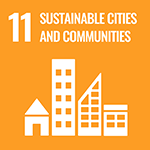Development of the Atmospheric Environmental Risk Management System in South America
Principal Investigator


Dr.
Head, Lidar Division of Laser and Applications Research Center (CEILAP)
Eduardo Quel


Dr.
Director, Laboratorio de Investigaciones Atmosfericas, Universidad de Magallanes (UMAG)
Felix Zamorano
ODA Recipient Country
Argentine Republic /Republic of Chile
Research Institutions in Japan
Nagoya University / National Institute for Environmental Studies (NIES)
Research Institutions in Counterpart Country
Laser and Applications Research Center (CEILAP) / The University of Magallanes (UMAG)
Adoption fiscal year
FY 2012
Research Period
5 Years
Overview of the Research Project
Building ground-based system to measure atmospheric changes and to deliver the information in real time
In South America, important environmental challenges include aerosols* from volcanic ash, forest fires, and mineral extraction, and also intense exposure to ultraviolet radiation due to the ozone hole. Despite these circumstances, the deployment of ground-based observation systems has been slow, and South America still remains a blank area in worldwide observation networks. This project aims to put in place observation networks that use state-of-the-art remote sensing technology and to construct real-time data management systems that can rapidly deliver the information of atmospheric environmental risk. The aim is to find ways to reduce the impact of threats to public health, interruption of airline schedules, and other problems for society.
* Aerosol: Microscopic particles of fluid or solid suspended in the air. Volcanic ash aerosols in particular are a threat to air traffic.
Global changes in the atmosphere can be seen from South American observation data
The observation data forms a precious database that contributes to elucidating atmospheric changes on a global scale, and is being used in models to predict both long- and short-term changes. The outcome of this project should provide a template for policies to counter environmental risk through multilateral collaboration between South American countries. It is also hoped that new viewpoints gained from comparative studies will enhance understanding and benefit studies of Asian dust (or yellow sand), which is an issue in East Asia.
Photo gallery

Local researcher (graduate student) adjusts an ozone observation system incorporating high-sensitivity superconductor millimeter-wave sensors

The Southern Patagonia observatory at Rio Gallegos, one of the sites in the observation network constructed for this research. The container at front right contains the millimeter-wave ozone observation system, and the container at the left contains an ozone observation system using lidar (laser radar).
Research Project Web site
Press Release
Links
Projects
Contact Us
Japan Science and Technology Agency (JST)
Department of International Affairs
SATREPS Group
TEL : +81-3-5214-8085
Related articles by Category
- Global-scale environmental issues
Environment / Energy
(Global-scale environmental issues)
 Kingdom of Thailand
Kingdom of Thailand
“Natural rubber seeds”, the unlimited potential hiding in natural rubber plantations
Utilization Technology of Rubber Seeds for Green Products to Mitigate Global Warming and Plastic Pollution
- Argentina
Disaster Prevention and Mitigation

 Argentine Republic
Argentine Republic
Protecting people against disaster by predicting intense rainstorms and flooding!
Numerical Weather Prediction and Warning Communication System for Densely Populated and Vulnerable Cities
- Latin America
Disaster Prevention and Mitigation

 Republic of El Salvador
Republic of El Salvador
Protecting international port cities from compound disasters with dominostyle chains of destruction!
Compound Disaster Risk Reduction associated with Large Earthquakes and Tsunamis
- SDGs : Goal.11
Disaster Prevention and Mitigation

 Republic of Turkey
Republic of Turkey
Use disaster mitigation science to reduce the damage from massive active-fault earthquakes!
Establishment of a Research and Education Complex for Developing Disaster-resilient Societies - MARTEST




















